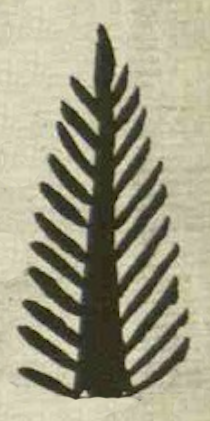tzontli (HJleg208exp2)
This is a rendition of the notation for 400 (tzontli). It is a black line drawing with no added color. It looks something like a tree with no leaves, having a thicker central axis and branches or spikes coming out and getting shorter as they emerge from the axis, working their way to a point at the top.
Stephanie Wood
Another renditions of tzontli (standing for the number 400) also shows a tree-like shape, but the collection also contains a bundle of hair and a somewhat more horizontal group of upright lines. See below, right. Robert Haskett contributed to the analysis of this record.
Robert Haskett and Stephanie Wood
tzōtli
tzontli
Stephanie Wood
1583
números, cuatrocientos, four hundred, trees, árboles, ramitos, ramas, branches

tzon(tli), a clump of hair, hair, a head; 400; https://nahuatl.wired-humanities.org/content/tzontli
centzon(tli), 400, https://nahuatl.wired-humanities.org/content/centzontli-0
cuatrocientos, 400
Stephanie Wood
Single-page codex, Archivo General de la Nación, México, Ramo de Hospital de Jesús, legajo 208, expediente 2. Robert Haskett kindly captured the images from the manuscript and shared them with this project.
The Archivo General de la Nación (AGN), México, holds the original manuscript. This image is published here under a Creative Commons license, asking that you cite the AGN and this Visual Lexicon of Aztec Hieroglyphs.







